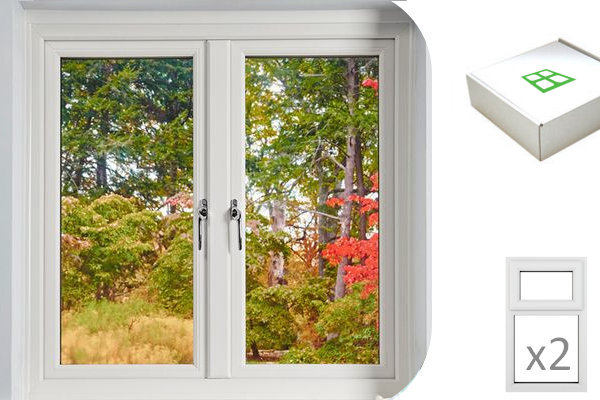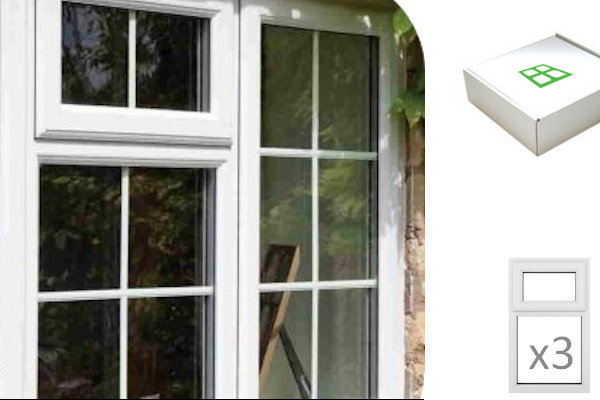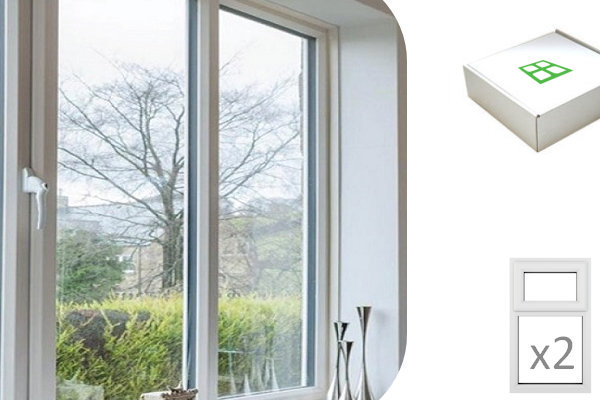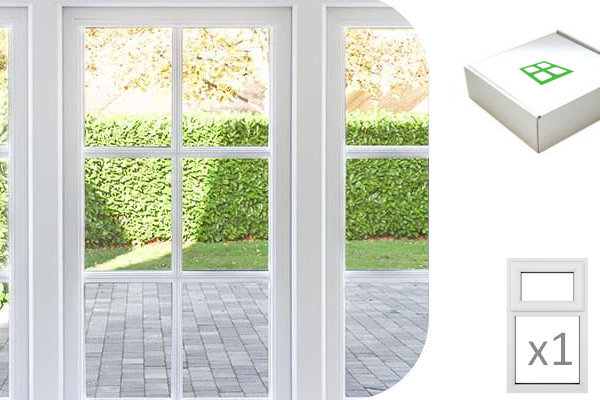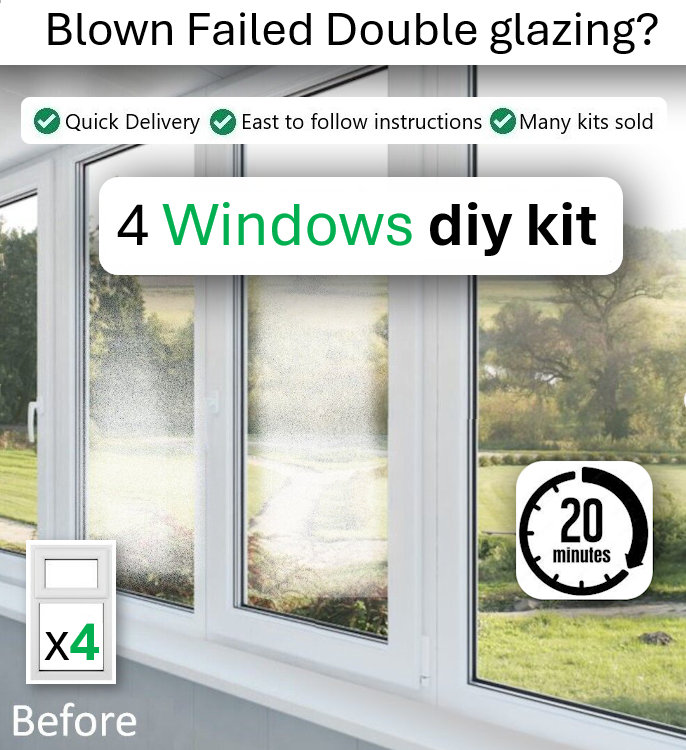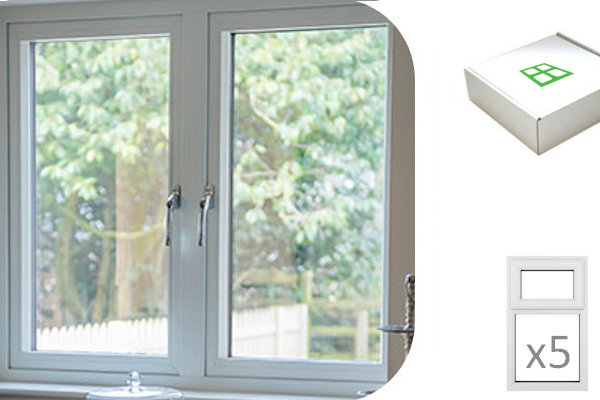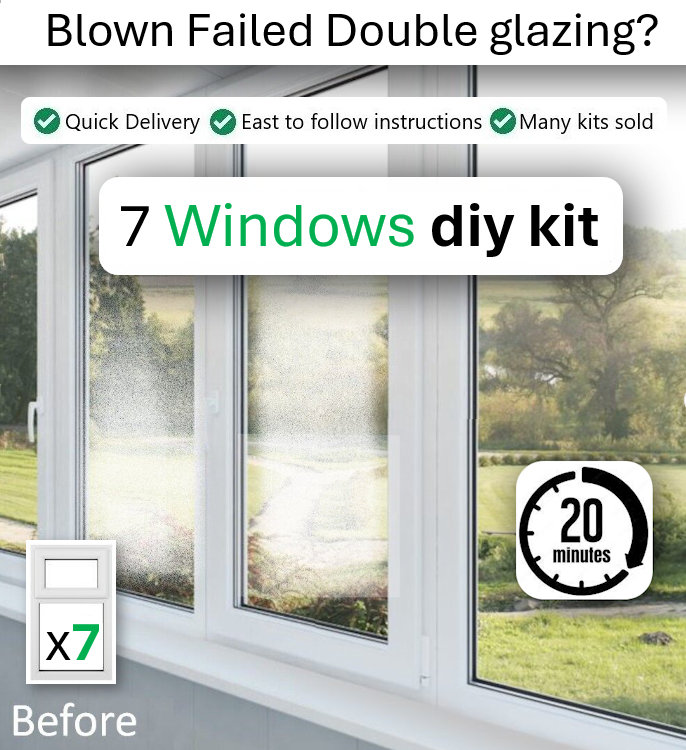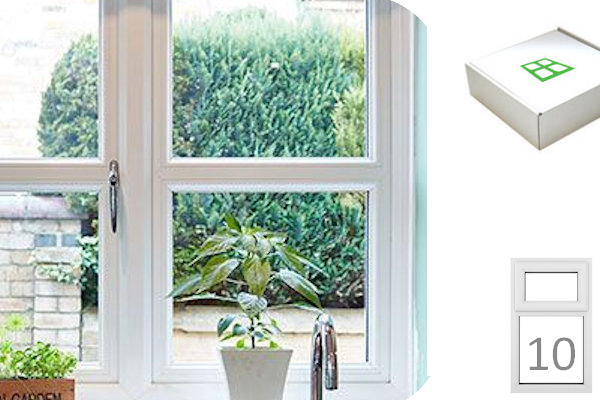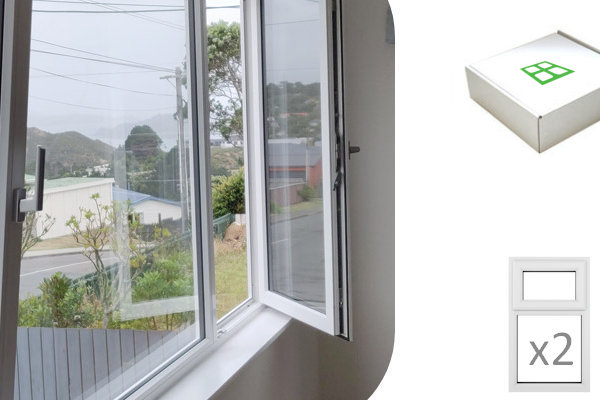Window Science
What is double glazing?
Double glazing refers
to a window that has two panes of glass. The main
component of the window is the double-glazed sealed
unit, also known as an insulated glass unit (IGU)
which sits in a frame of uPVC, aluminium, or timber.
The IGU comprises of
two sheets of glass separated by a spacer bar to
create an air gap which is filled with an insulating
gas. A bit like a sandwich of glass bread with a
filling of air.
The primary benefit of
double glazing is thermal insulation – to retain
heat in a room whilst stopping cold air entering
from outside to make the room more energy-efficient.
Double glazing windows make
such a difference to energy-efficiency that building
regulations were set in 2002, to say that all
replacement windows must be a minimum double-glazed
C rated – unless the property is a listed building
or in a conservation area.
Who invented double glazing?
It might be difficult
to remember a time before double glazing as most
houses today have upgraded their windows to be more
energy efficient. But, once upon a time, we all
lived in houses with cold rattling windows.
There's a variety of
claims on who was the first to experiment with
double glazing, but it's generally considered that
the Scottish were the first in Victorian times.
Adding a second pane of glass to their existing
windows to try and keep out the harsh Scottish
elements. Although, there is mention that the Romans
also had their own heat retention system.
Commercially, double
glazing was 'invented' in the US in 1930 by a CD
Haven and this was later patented as 'Thermopane' by
an Ohio glass company. After this, in the 50s,
double glazing began to filter into the homes of
Americans.
In 1965, in the UK,
Everest began life selling a version of aluminium
secondary glazing. In 1978 when we developed our
first aluminium double-glazing product. In 1984, our
uPVC double glazing was created, and this quickly
became the window of choice for the UK.
How does double glazing work?
Double glazing works by
creating an air gap that insulates against heat
transfer between two different temperature zones
(inside and outside).
Two panes of glass are
sealed in a unit (IGU) separated by a spacer bar.
The space between the
panes (usually 6-12mm) creates an air gap that slows
down thermal transfer (hot or cold) by conduction –
it doesn't 'trap heat' but it slows down the
movement of heat to reduce heat loss.
Because air can't
circulate in the narrow gap between the panes, air
convection is slowed down and this also reduces heat
transfer.
How does double glazing reduce
heat loss?
Double glazing reduces
heat loss through the thermal cushion and insulation
of the air contained in the sealed unit.
As cold air hits the
external pane of glass, the pane of glass transfers
the temperature to the Argon gas layer.
Argon gas has a 34%
reduced thermal transfer rate to air and slows down
the conduction of heat between two differing
temperatures.
So, the Argon layer
transfers less of the temperature difference to the
internal pane of glass which remains at a median
temperature between the Argon glass and the room.
In the same way, when
the warm air from the room meets the internal pane
of glass the Argon gas slows the transfer of the
warmth from the inside out. And heat is retained in
the room.
In a double-glazed
unit, the outside pane of glass and the internal
will be different temperatures.
How does double glazing reduce
noise?
Sound is an energy that
moves in waves, like waves on the sea, by vibrating
the molecules of the air and objects it comes in
contact with. When sound waves hit glass, the glass
vibrates at the sound wave frequency and transmits
the vibration to the air molecules on the other side
of the glass.
As the sound wave
travels, dense objects absorb the energy which
reduces the frequency of the waves as it passes
through. This is why, if you put your ear to a wall
you can hear people talking on the other side but if
you step away from the wall you can’t hear it.
Sound has a longer wave
vibration than light which means it can bend
(diffract) around corners making it far more
difficult to contain than light. If you have a
trickle vent, you can still hear a lot of noise even
if your window is closed. It also means, if the
seals are failing in the double-glazed unit, you
will hear an increase of noise leaking through the
window.
Double glazing reduces
noise by absorbing some of the energy and slowing
down the vibration frequency as it transfers through
the glass and the layer of Argon gas. When the sound
wave passes through the other side of the window,
the sound wave is slightly diminished and the noise
a little quieter.
However, the key to
reducing noise as much as possible is to disrupt the
sound waves and frequencies as they pass through a
material. This can be done by combining different
thicknesses of glass close together.
How does double glazing reduce
condensation?
The air around us is
full of tiny molecular droplets of water that are
invisible to the eye. In warm air, the molecules are
spaced far apart which holds the moisture but as the
air cools the molecules come together. When the
molecules are so close together, they merge into
visible liquid this is known as the 'dew point'.
Condensation manifests
when moisture-laden air comes in contact with a cold
surface – such as a windowpane. When you boil a
kettle, cook food or have a hot shower, the air
becomes filled with more moisture than usual and
this is why kitchen windows and bathroom mirrors are
most steamy.
We also expire moisture
on our breath and this is why you find condensation
on a bedroom window when we wake up.
Inside the
double-glazed sealed unit, the contained air also
holds a low level of moisture that could form on the
glass if the temperature difference should change.
To address this, every
sealed unit is built with crystalline desiccant
(like what you find in a new bag or shoes) contained
in the spacer bar. The desiccant draws the moisture
out of the air gap and keeps the internal space
between the panes dry.
Internal condensation
happens when the seals on the sealed unit begin to
fail and more moisture is drawn into the unit. The
desiccant becomes saturated and can no longer hold
moisture and as a result, condensation forms inside
the unit.
The reason we see so
much condensation on single glazed glass is that the
glass is susceptible to cold and stimulates the dew
point from the water vapour in the air.
Double glazing helps to
reduce condensation on the inside of your windows
(inside the room) because the glass is not as cold
as single glazed. The air gap inside the
double-glazing sandwich helps to keep the internal
pane of glass closer to room temperature. This
difference in temperature is enough to stop the
water vapour reaching dew point and forming
condensation on the glass.
Solar gain through double glazing
Double glazing reduces
heat loss and acts as a barrier against the cold but
it doesn't stop the warmth from the sun, known as
solar gain.
Sunlight produces short
wave infrared radiation – this is what warms objects
in the sunshine. The short waves are absorbed by
glass from the outside and the energy becomes
re-radiated from the inside of the glass as
long-wave infrared.
Short waves can pass
through glass but the long waves can't, so the
thermal energy of the infrared radiation becomes
trapped bumping against the glass unable to pass
through. This process is known as the greenhouse
effect.
The rise in temperature
is known as solar gain – we measure this by G value.
For windows facing
direct sunlight, we recommend low-emissivity glass
(Low-E) that help to regulate room temperature
because rooms quickly overheat with solar gain. If
you've ever sat in a conservatory on a sunny day you
will know how oppressive it can get.
Low-e glass applies a
microscopic magnetron coating that reflects the
shortwave radiation away from the outside of the
glass. The window maintains the clarity of daylight
but stops the build-up of thermal energy and the
greenhouse effect.
Low-e glass can also be
combined with a solar control glass coating that
further filters the light to reduce the solar glare
and reduce damage to furnishings and fabrics.
How is double glazing made?
The sealed unit is an
integral part of the double-glazed window and the
part most susceptible to failure. This is where
manufacturing quality really counts.
A double glazed unit is
created by cutting the two panes of glass to size –
all Everest units are made to measure. The spacer
bars are prepared to size with the desiccant inside.
Old aluminium spacer
bars are conductors of temperature and act as
thermal bridges transferring the cold from the
outside pane to the inside. This is why the edge of
the glazed unit has always been the weak spot where
it's the coldest. Warm edge spacer bars are blended
from stainless steel and polypropylene which has a
low thermal conduction rate and this reduces heat
loss at the edge of the sealed unit.One pane of
glass is laid with the spacer bars in position. This
moves through our Argon filled chamber and whilst
moving, the second pane of glass is precisely
pressed on top, sealing the unit and trapping the
Argon.
We construct our units
by a robot in an Argon filled chamber to ensure the
only thing in our sealed unit is Argon. Other
companies drill two holes into the frame and hand
pump the Argon which can leave the unit filled with
a mixture of air and Argon. By not drilling the
frame we maintain the structural integrity and
airtight seal of the frame.
The unit is then sealed
with a bitumen-based sealant around the edge. We
apply the sealant in a molten state so that it
flexes if the unit does and keeps the unit airtight.
Lifting glass by hand
puts unnecessary stress on the pane that can lead to
warping and visual defects. We assemble our units
mechanically so that panes are lifted evenly using
suction cups to ensure no part of the glass is
placed under stress to maintain integrity and
quality.
The double-glazed unit
is then ready for assembly in the chosen frame
material.
What are the benefits of double
glazing?
Thermal transfer, solar
gain, dew point, sound frequency and conduction -
what all this information means in reality is that
double glazing will:
- Keep more external
noise out of your home
- Retain more heat
and keep your home warmer
- Reduce
condensation on your windows
- Reduce the amount
of energy you use to heat your home
- Reduce your energy
bills
- Add value to your
home
If you’re thinking of
upgrading your windows, all our windows are bespoke
made from a range of different glass products.
If you have an extra
cold room that doesn't get light, a room that gets
too much sun, or a bedroom facing a noisy road – we
can make the perfect window for you.
£14.90
2 Window repair kitYour kit includes a free condensation guide!
& free UK postage - with all kits
£16.90
3 Window repair kitYour kit includes a free condensation guide!
& free UK postage - with all kits
£19.99
Premium plus repair kit + PPEYour kit includes a free condensation guide!
& free UK postage - with all kits

Contact us & Support
Do you need help or just have a question just contact us
We will try to get back to you within the hour!
sales@clearmywindow.co.uk
Recent Feedback
Feedback from buyers using our kits see what they think
My double glazing unit is now moisture free! a great idea and hack.

Mr Davis
CheshireAn extremely good item, worked perfectly for us. Wonderful customer service and replied very quickly. I would definitely recommend this item and company.

Dan Wilson
Bury, LancashireTook my time drilling the holes, and kept dipping the point of the drill bit in water. No problems I applied the vacuum cleaner to one hole, to pull dry warm air through the unit, and must have created a perfect seal. That created a partial vacuum

Margret Simmons
DorsetMany thanks Item arrived well packed and on time. Not tried it yet but hopefully will work well

Mr Dawson
NewcastleI bought the 3 x window kit easy to follow instructions the moisture cleared up in a few days I would recommend for cheap alternative to paying to have them replaced

Martin Drake
WalesA bit strapped for cash to replace a misty window Thought it would be a good idea worked quite well easy to follow instructions

Mrs Smithson
StaffordRealy works fab job thanks now buying for my freind

